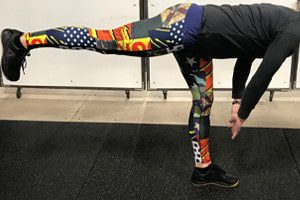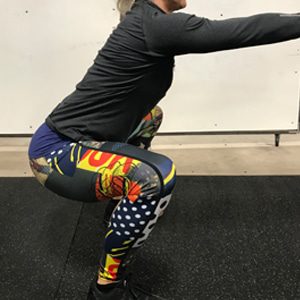Functional strength training has been a trending phrase in the fitness and recovery world over the last few years, and the phrase has continued to gain popularity for its growing acceptance and importance.
What is Functional Strength Training?
The term functional strength training is defined as “performing work against resistance in such a manner that the improvements in strength directly enhance the performance of movements so that an individual’s activities of daily living are easier to perform.”1
Basically, by training the body in a functional way, such as an exercise like squatting, then daily movements are easier to perform (i.e. getting up and down out of a chair).
The Benefits of Functional Strength Training
Everyone can benefit from improving their strength for household and community tasks to help prevent injury. The most common benefits include:
- Easier to perform daily activities
- Strengthen muscles at a low impact
- Improves muscle memory
- Increases flexibility, balance, and coordination
- Helps with joint pain
- Helps to prevent potential injury
Functional strength training has been particularly effective among older adults, especially since muscle mass and strength will decrease 30-50% between the ages of 30 and 80 years.2 Only a mere 6 percent of adults perform resistance training two or more times per week.3
Furthermore, it is encouraged to engage the most “forgotten muscles,” which will be referred to as the pelvic floor, hip abductors and deep external rotators, as well as scapular stabilizers. A few examples of exercises to engage those above are as follows…
If you want to learn more about how a functional strength program can help you, contact the Set Physical Therapy team today to learn more about getting started.
Functional Strength Training Exercises

1. Single Leg Romanian Deadlift (SL RDL)
Note: emphasis keeping hips flat in line with spine and not opening up hips – should be facing down to the ground and go as low as feel a hamstring stretch in the stance leg, then use glutes to return to standing. Repeat.
2. Squat with a Kegel with Post Pelvic Tilting
Note: back is flat with butt directly following the line of the spine – avoiding lumbar flexion “butt wink” and lumbar extension (butt pointing back/out).


3. Pluses in a Plank Position
Note: can do a high (on hands) or low plank (on forearms) and the “plus” is the pushing the shoulder blades apart and return to center. Repeat.
References:
- Bryant CX. What is functional strength training? May 11, 2011. Accessed: Feb 7, 2018. https://www.acefitness.org/education-and-resources/lifestyle/blog/1452/what-is-functional-strength-training
- Faulkner JA, Larkin LM, Claflin DR, Brooks SV. Age-related changes in the structure and function of skeletal muscles. CEPP. 2007;34(11):1091-1096.
- Loustalot F, Carlson SA, Kruger J, Buchner DM, Fulton JE. Muscle-strengthening activities and participation among adults in the United States. Research Quarterly for Exercise and Sport. 2013;84(1):





